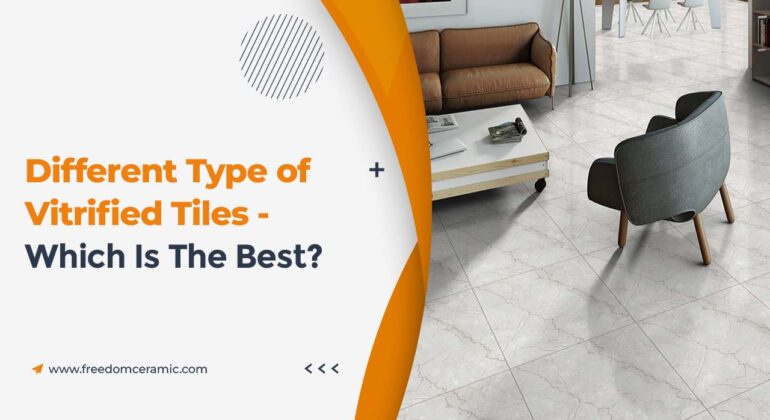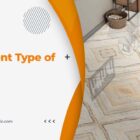Vitrified tiles are the talk of the town, they are what is “happening” in the tiles industry. The years of evolution and technological advancements and innovations have made way for a superior quality ceramic tile and that is Vitrified Tiles. vitrified tiles have become one of the most popular tiling options.
These tiles have improved qualities, such as being thick, dense, strong, and stain-resistant. These tiles are made using a variety of manufacturing processes to produce various vitrified tiles types and in different qualities. Their detailed and intensive processing makes them durable to withstand wear and tear for a long time.
These days they are used instead of marble or granite for flooring as an excellent alternative. Because of their strong water and frost resistance, they are often installed in outdoor areas. Vitrified tiles have become increasingly popular in recent years for many such qualities.
Various Types Of Vitrified Tiles
By process and quality, there are 4 different vitrified tile types, they are:
1. Glazed Vitrified Tiles:
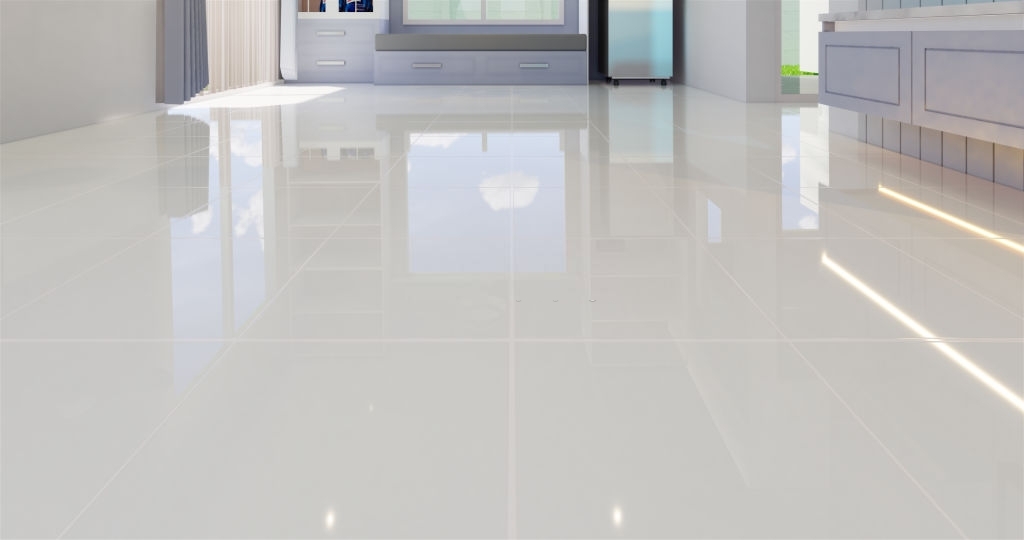
Glazed vitrified tiles, or GVTs or Digital glazed vitrified tiles, have a glazed surface and are produced using digital technology, allowing for a variety of patterns and appearances on the tile, such as designs that resemble wood, bamboo, marble, and other natural materials. They are further categorized into 2 types:
1.1 Soluble Salt Vitrified Tiles:
Soluble salt vitrified tiles are the most affordable vitrified tiles on the market. During the production cycle, soluble salts are utilized to dissolve the tile’s surface and impart pigment, style, and patterns.
1.2 Nano Polished Soluble Salt Tiles:
Chemical nanotechnology is used to create these tiles. A coating of liquid silica is added to the soluble salt-vitrified tiles to create nano-polished soluble salt tiles. This technique fills the tile’s nano or micropores, making the tiles seem shinier and feel smoother than simple soluble salt-vitrified tiles. These tiles are abrasion-resistant and require little to no maintenance.
2. Full Body Vitrified Tiles:
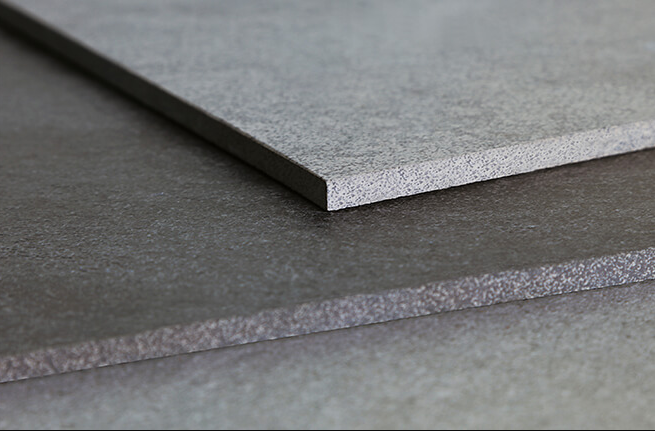
The color of whole-body vitrified tiles is consistent throughout their thickness. As a result, the tile never fades over time. Because of this feature, full-body vitrified tiles are the best choice for high-traffic areas because of its ability to withstand rough usage and resistance against scratches and stains. The pigment mixture is added early in the manufacturing process to ensure a consistent, homogeneous color throughout the tile.
3. Polished Glazed Vitrified Tiles:
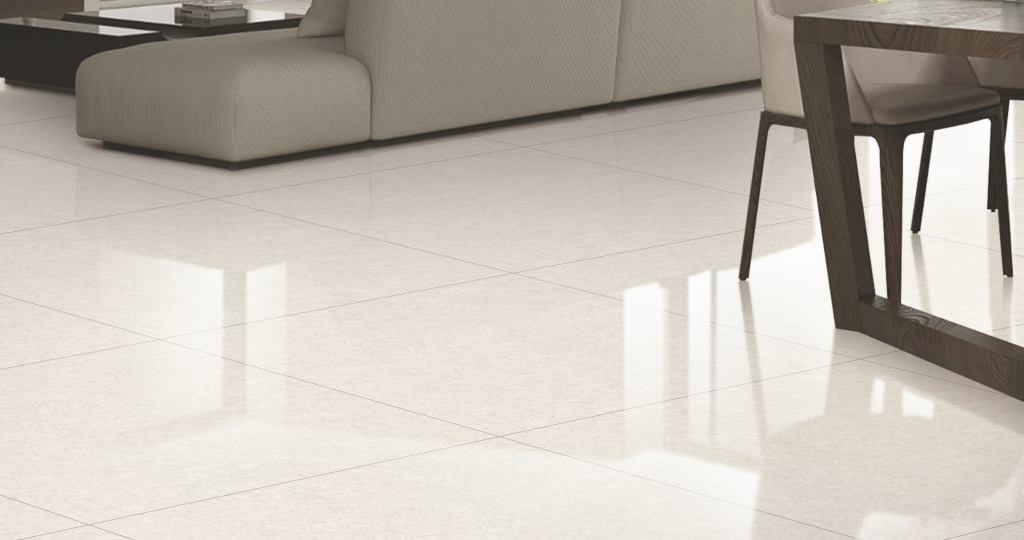
Polished glazed vitrified tile is one of the popular vitrified tiles type for purely its aesthetics and beauty. These tiles are made in the same way that glazed vitrified tiles are. In PGVT tiles, an extra layer of polish is placed at the top to improve the shine.
When compared to GVT tiles, PGVT tiles have a lower water absorption capacity. Though as compared to GVT it has limited application, as it is not a suitable tile for heavy traffic areas.
4. Double Charge Vitrified Tiles:
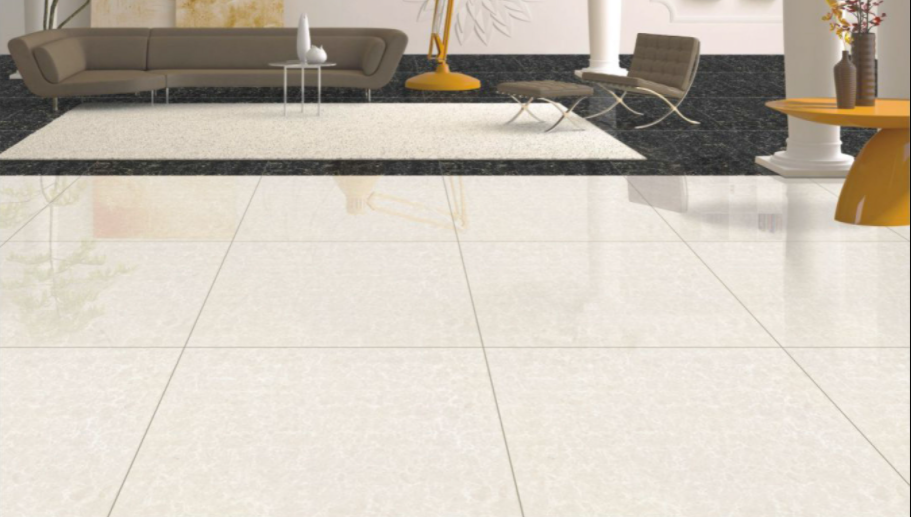
Double-charge vitrified tiles are a product of a combination of clay, silica, quartz, and feldspar. Charged twice Vitrified tiles are 3-4 mm thicker than regular tiles, which are manufactured by combining two layers of tiles. This method creates tiles with a sturdy tile surface.
Due to the fact that double-charged vitrified floor tiles can endure heavy traffic and require very little care, they are by far the most popular flooring choice for both commercial and residential buildings. The vitrification procedure also makes the tile surface more durable and shinier, giving the space where they’re installed a polished appearance.
Why Vitrified Tiles?
Vitrified tiles are more durable than marble, granite, or ceramic tiles. Vitrified tiles are also seen to be of higher quality due to their uniformity in size and thickness. Because of their polished surface, these tiles are easy to clean. At Freedom Ceramics the brand follows a strict and extensive production process; their vitrification procedure reduces the water absorption rate of these tiles, making them non-porous. This is also one of the reasons for the stain resistance of ceramic tiles. When compared to granite, marble, or other similar tiles, vitrified flooring tiles are half the thickness, therefore, easier to handle. The innate property of these tiles also repels germs and fungal developments. When exposed to sunshine, the color of these tiles does not change or fade.

